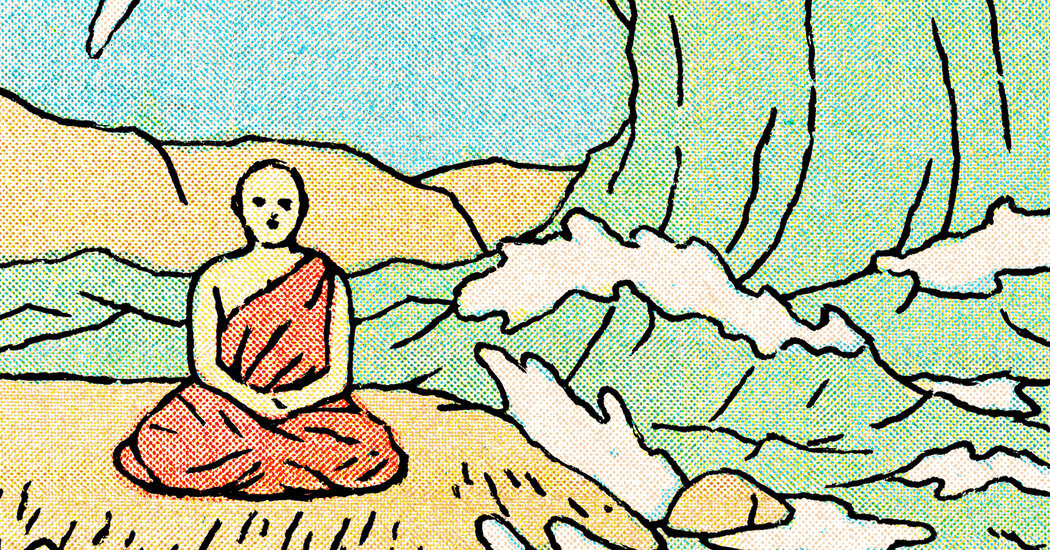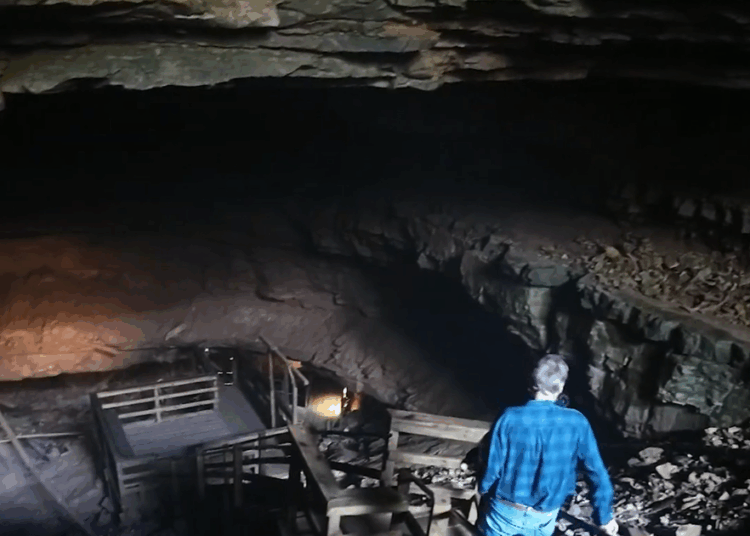Crashing waves and flying spray have been the most consistent visual motifs in Mike White’s HBO hit “The White Lotus,” which just wrapped up its third (and by general agreement, weakest) season with a bloody denouement at the Thailand outpost of its titular resort. And midway through the season we received a direct interpretation of what that watery imagery is supposed to represent from the lips of Luang Por Teera, a Buddhist monk and an ajaan, or teacher, with whom the daughter of one of the wealthy hotel-going families hopes to study.
Queried by the young woman’s father, Tim Ratliff, a North Carolina businessman who is contemplating suicide — indeed, murder-suicide — after discovering that he may be ruined and even headed to prison, about what awaits us after death, the monk answers: “When you are born you are like a single drop of water, flying upward, separated from the one giant consciousness. You get older, you descend back down, you die, you land back into the water, become one with the ocean again. No more separated, no more suffering. One consciousness. Death is a happy return, like coming home.”
This theology doesn’t just neatly interpret the show’s repeated crashing-waves backdrop as human folly, it also makes sense of various specific watery moments and images (spoiler warning) throughout the show. A character in Season 1 taking a step toward enlightenment by ditching his upper-class existence to paddle an outrigger canoe into the deep Pacific after a healing scuba-diving trip with his dad. Another character scattering her mother’s ashes into the surf. The deaths that punctuate the first two seasons — each more tragicomic than fully tragic, one ending with a character falling into a bathtub as he bleeds out from an accidental stabbing, the second ending with a character drowned and perhaps at peace in the depths of the Ionian Sea. Landing back into the water on “The White Lotus” can seem like the best and only escape from the tyranny of ego and desire.
Coming from a Buddhism-influenced showrunner, it’s a vision of the soul’s journey as a brief and ephemeral foray, a drop flung into the air and then returned, with all the frenzy and silliness and stupidity of mortal life dissolved. Laugh at these poor souls as you might laugh at yourself, is the implied message, because the spray flies briefly, the stakes aren’t as high as the droplets imagine, and soon they’ll be at peace.
But there are some difficulties with this reading, usefully discussed by Matthew Gindin, himself a former Buddhist monastic, in an essay for the religious journal Arc.
The first issue, writes Gindin, is that the monk’s speech about the ocean is not what Theravada Buddhism, the school to which Luang Por Teera apparently belongs, actually teaches about life, death and the afterlife:
According to Theravadin teachings, when one dies one is reborn according to one’s karma. Tim doesn’t have an automatic happy return to the sea of universal consciousness to look forward to, but something much less pleasant, given his lying, his stealing, and the suicide he is then contemplating, in a Lorazepam- and whiskey-fueled haze. Worse, by having the ajaan present this teaching at that time, the show seems to be implying that Buddhist teachings might encourage his contemplated suicide (and indeed, if the Buddha taught that all deaths led to a happy return to the blissful home of oceanic consciousness, maybe they would).
So rather than presenting authentic Buddhist teachings, the show is seemingly offering a characteristic Western-liberal spin on traditional Eastern religion — a Californian New Age perspective dressed in more exotic robes, with the tougher aspects common to the major world religions (strict teachings on morality and the consequences of sin; stern warnings about consequences in the next life) washed away in the surf.
Yet at the same time, as Gindin notes, the actual human drama of the third season of “The White Lotus” is heavy with sin and violence and corruption, much heavier than the prior seasons, in ways that seem to fit with actual Buddhist teachings rather than some New Age gloss. The moral and spiritual stakes are existential rather than ephemeral, the temptations and consequences more than a fleeting burst of spray against the rocks, the wicked characters truly wicked, the worst sins truly damnable.
This yields two dissonances that I suspect contribute to Season 3’s uneasy reception. The first dissonance is just between the latest season and its predecessors. As Matt Yglesias suggests, the first season of “The White Lotus,” set in Maui, stood out from the television pack because it was a comedy of manners rather than a gritty drama, interrupted by a death but not defined by it. The second season, set in Italy, introduced a darker thread, a sinister murder plot appropriate to its Renaissance palazzos, and featured Catholic iconography pretty starkly in the background to the sinning characters. But even the murder plot was infused with a certain comedy because of the cluelessness of the target — and the other stories were still in the same lust-and-folly ground as Season 1.
Whereas in Season 3 almost all the characters are caught up somehow in violence or potential violence — armed robbery, murder-suicide, blackmail and extortion, a culminating shootout with a serious body count. It’s an escalation extreme enough to feel like a different kind of show, in tension with the original style, and not as distinctive in comparison with other rivals on TV.
But then it’s also in tension with itself, for the theological reasons described above. Set against the sin and vice and carnage on display in the hotel and its environs, the monk’s New Age aphorisms don’t feel calming; if anything, they feel a bit sinister. As Gindin notes, delivering a nothing-really-matters-you’re-just-a-water-drop message to a man considering killing himself and his family plays almost like a monastic license to kill. And likewise, when the final, watery shot of another character, a man who has destroyed not only his own life but also several others, seems to show him slipping peacefully back into the “one giant consciousness,” it doesn’t feel reassuring or comedic; it suggests a nihilistic indifference to what human beings actually do while they’re alive.
Which, again, is not the Buddhist position on such matters. Nor is it exactly the show’s position, since the plotting otherwise seems to take moral questions very seriously. But that seriousness stands in an uncertain relationship to the repeated message of ephemerality, the consistent imagery of flying droplets, in a way that leaves the latest trip to the White Lotus morally stranded, somewhere between the shallows and the depths.
Breviary
The late, great neoliberal novelist.
The revolt of the peasants.
The sources of Trumpian support.
The possibility of pro-family policy.
A hundred years with Jay Gatsby.
Why the best and brightest can’t read.
Ross Douthat has been an Opinion columnist for The Times since 2009. He is the author, most recently, of “The Deep Places: A Memoir of Illness and Discovery.” @DouthatNYT • Facebook
The post How ‘The White Lotus’ Ran Aground appeared first on New York Times.




